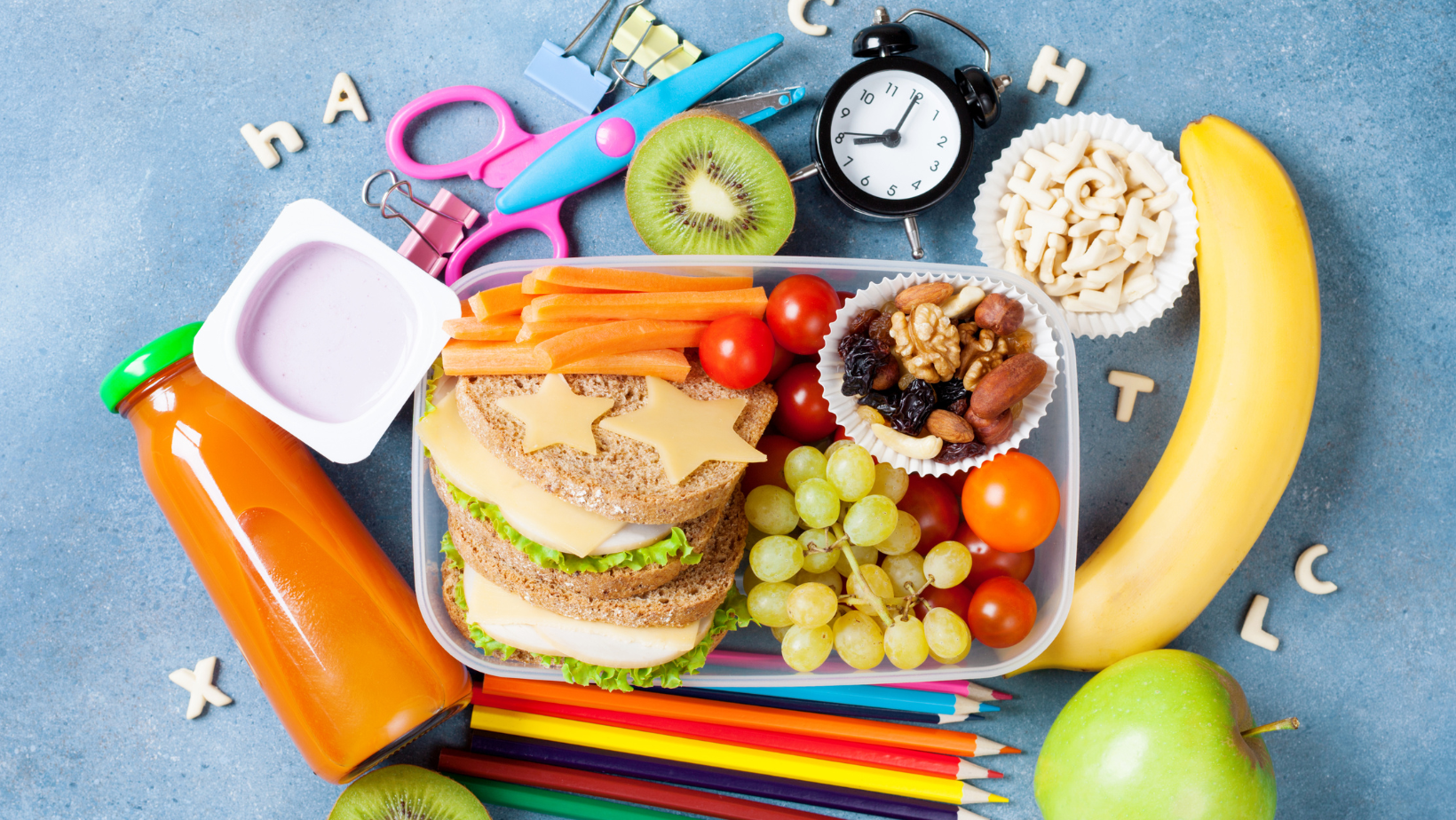As a new school year approaches, this preparative stretch of time offers the perfect opportunity to upgrade household routines surrounding how food is chosen, prepared, and enjoyed by the whole family. While the little ones get ready to head out the door with backpacks, notebooks, and pencils, ensure they are equally well equipped with nourishing food to take on each day.
Consider the Food Groups
Protein – Animal products like chicken, turkey, fish, and eggs offer lean and complete protein to keep bodies strong and growing. Equally helpful are plant proteins, including beans, nuts, nut butters, lentils, and tofu, which can offer more variety and speedy snack preparation.
Fruits – Handheld fruits like bananas, apples, and oranges can be sent off in a lunchbox just as they are, while berries or cut-up watermelon do well in a baggie or small Tupperware container. To dodge unneeded sugar, look for fruit cups packaged in 100% juice or water and applesauce with no sugar added.
Vegetables – Baby carrots, cut celery, or sliced cucumbers with a favorite dip or dressing make for a sustaining snack at home. A colorful dinner plate can also make a meal more interesting, so trying a variety of veggies can increase engagement at the dinner table. Consider including bell peppers, sweet potatoes, beets, or eggplant among the greens.
Dairy – Milk, yogurt, and cheese offer calcium for strong bones. For lactose intolerance or those who generally dislike dairy, consider non-dairy alternatives that are fortified with calcium and vitamin D. Dairy and dairy alternatives are often wholesome sources of protein as well!
Grains – Look for bread, cereal, and grain products with 100% whole wheat/whole grain on their labeling. It is recommended to make at least ½ of the grains eaten each day whole grains. This increases fiber intake, which in turn, promotes steady fullness for better energy and focus. Oats, brown rice, and quinoa are some grain choices that are 100% whole grains just as they are!
Guide Balanced Eating
Combining foods from different food groups above creates something filling and provides more necessary nutrients with each passing meal and snack!
Some examples:
- Apple slices with peanut butter
- Oatmeal or yogurt with berries
- Toast with a hardboiled egg
- Grilled cheese with a side of sliced bell peppers
- Whole grain crackers with salsa, hummus, or guacamole
Get the Facts
The nutrition facts label provides a wealth of information about every product in the grocery store. There is nothing wrong with picking up pre-packaged snack items, though it is worth trying to do so mindfully. When in doubt, check the label! Keeping conscious of added sugar, saturated fat, and high sodium in products will ensure these convenient choices fit comfortably into a balanced intake.
Grow Together
So much planning and preparation can go into getting food from the grocery store to the lunchbox or the dinner table; What steps of the process can include the whole family?
If you are able:
- Take the kids to the grocery store. Explore the produce section together and pick out something new!
- Request some extra hands in the kitchen. Smaller hands may enjoy washing, measuring, mixing, or plating ingredients.
- Set aside time to prep lunches ahead once per week. Discuss favorite foods and what portions of them are filling.
Remember that meals and snacks don’t have to be perfect! Every day can be a new opportunity to make thoughtful food choices, whether you are catching the bus on the first day of school or writing your 100th lunchbox note.


